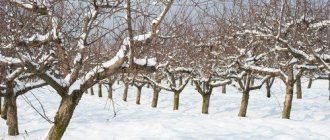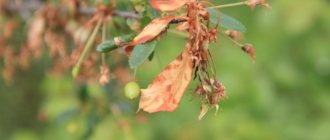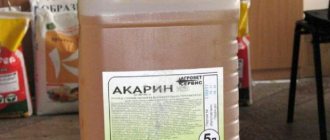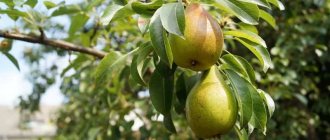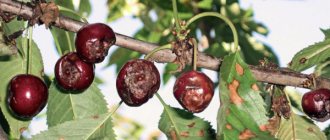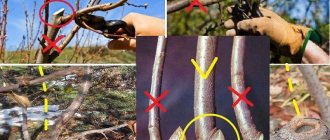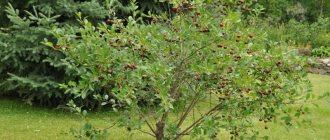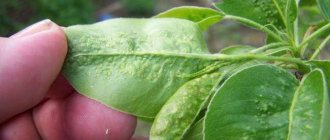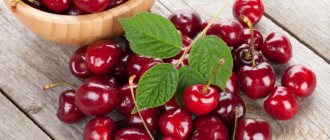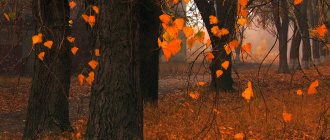Feeding fruit trees and shrubs in the spring is necessary to ensure their flowering, successful ovary and a large harvest. Garden trees and shrubs deplete the soil over the course of a season, as they try to take from it all the most valuable things for themselves. Spring feeding is an opportunity to replenish nutrients. Even in winter, trees and bushes consume microelements from the earth, albeit in much smaller quantities. As a result, by spring the soil under the tree is depleted.
After winter, fruit and berry trees emerge from hibernation and are ready to consume nutrients in increased quantities. That is why it is important to provide them with a balanced complex of minerals and organic matter. This is the key to their health, abundant fruiting and longevity. In addition to fertilizing, it is also necessary to prune fruit trees in order to strengthen the root system of the trees.
What do you feed fruit trees in spring?
Tree feeding can be mineral or organic.
It is the mineral elements that garden trees and shrubs need in early spring to compensate for the deficiency. It is better to use ready-made mineral complexes, but you can also buy them separately.
In the garden for fruit trees and shrubs in the spring, the three most important mineral elements are nitrogen, potassium and phosphorus
. They are contained in various fertilizers. Nitrogen in urea, ammonium nitrate. Superphosphate contains mainly phosphorus. To compensate for potassium deficiency, it is added in the form of potassium chloride. Complex fertilizers are, for example, nitroammophoska, containing nitrogen, potassium and phosphorus.
Regardless of what soil the trees grow on, what type and variety they belong to, everyone needs nitrogen, potassium and phosphorus. Only the quantity, proportions and time of application differ.
How to find out which minerals plants lack:
- nitrogen leaves become small and colorless;
- iron leaves turn yellow, dry at the edges, new shoots do not appear;
- potassium leaves turn pale and acquire a bluish tint, curl downward at the edges;
- calcium leaves turn white and curl upward; foliage and ovaries fall;
- magnesium foliage turns yellow and red;
- copper brown spots appear on pale foliage;
- zinc leaves stretch out and become narrow;
- phosphorus foliage noticeably darkens to a bronze or purple hue;
- boron leaves become small, twisted, with yellow veins, and fall off.
If you notice any of these signs, it is worth purchasing the appropriate mineral fertilizer and applying it in the spring in addition to the main ones.
Organic fertilizers
The use of organics has been gaining popularity recently. The use of only natural substances is considered safer and more environmentally friendly. But the problem is that the nutrient content in such fertilizers can be incorrectly calculated, and their excess is no less dangerous than their deficiency.
Organic fertilizers for the garden include:
- Manure
is used to fertilize apple, pear, cherry and other stone fruit trees. Manure is used only after two years; it must “settle” and “weather” so as not to spoil the trees. - Humus
. It is mixed with soil; this fertilizer is especially suitable for young plants in the first 5-6 years. - Ash
. Fertilizer rich in phosphorus and potassium. Suitable for most garden and vegetable crops. It is simply sprinkled into the circle around the trunk and then the soil is loosened. You can also dilute 0.5 liters of ash in 10 liters of water and water the trees and bushes with this solution. You can also mix ash (half a glass) with urea (3 tablespoons) and dilute it in water (10 liters). Berry bushes are especially fond of this “drink”.
An alternative to spring fertilizing with organic fertilizers is the use of green manure. These crops are sown in the fall, then they rot in the soil, making it fertile and saturating it with nutrients.
Organic
To avoid the accumulation of nitrates and obtain completely pure fruits, it is better to use organic compounds. Several options are good for feeding pear trees in the spring. But they also need to be used correctly, to provide the plant with everything it needs and not to harm the root system.
Humus, manure or compost
Use only completely rotted varieties, as fresh organic matter releases ammonia and can cause burns to the roots. Compost or manure needs at least 2 years to be completely processed; it is easy to determine by its crumbly structure and the absence of a pungent odor. Remember simple recommendations:
- Before applying, it is advisable to loosen the surface, remove any debris and sprouted weeds.
- Distribute the composition evenly over the entire tree trunk circle at the rate of a bucket per square meter.
- Dig up the surface.
Marbled pear - sweetness above all! According to estimates of breeders from all over the world, about 6,000 thousand pear trees have been bred today.
But in our conditions... Water deeply to improve nutrient absorption if the soil is dry. When applying, it is advisable to break up all large lumps, if any. Carry out work in warm weather, preferably in the morning or evening.
Chicken droppings
This fertilizer contains almost all the necessary substances for feeding pears in the spring, so it is best to use it during this period. Due to the large amount of nitrogen, it is not advisable to apply it in mid-summer or the second half of the growing season. To ensure a good harvest, follow these simple recommendations:
- Do not use fresh composition. Usually it is allowed to sit for several months so that the ammonia evaporates and the uric acid leaves.
- If you apply the manure as is, it will burn the roots. Pour a small amount of the composition (about 1.5 kg) with 3-4 liters of water and leave to ferment in a warm place for 2-3 days.
- Top up to a volume of 10-12 liters. Mix well, loosen the tree trunk circle, and water generously before carrying out work.
- Water the soil with the solution. It is advisable to dig up or mulch the surface after this so that less moisture evaporates.
Advice! If you buy chicken manure in the form of granules, then to fertilize pears, first dilute it with water according to the instructions; there is no need to infuse it.
Apply the manure carefully, do not oversaturate the soil and do not burn the root system. It is better to dilute it a little stronger; the lower the concentration, the safer the composition. It is useful to water the solution on apple trees and other fruit trees in the garden.
Wood ash
It contains a lot of potassium, phosphorus and other trace elements. This is one of the best natural analogues of mineral options, so it is advisable to prepare in advance and collect more. Pour into well-closing containers or plastic bags. Apply like this:
- Can be used dry. Just scatter the ash over the surface at the rate of half a liter jar per square meter. After this, dig up the soil and water it well so that the beneficial components, along with moisture, reach the roots. This option is also good as fertilizer when planting pears - add about a liter jar into the hole.
- If you prepare a solution, it will be absorbed faster. To do this, pour 2 liters of crushed ash, add water, leave for a day or two. Then mix the liquid well, add to a full bucket, and use immediately.
- Apply no more than once per season, as it saturates the soil for a long time. Typically, beneficial substances are released for 2-3 years, but over time their concentration decreases greatly.
You can only use ash from burning wood, grass or straw. Under no circumstances should you use formulations containing plastic or other polymeric substances. They contain many harmful impurities; they pollute the soil rather than saturate it with useful components.
Bone flour
Use it as a source of phosphorus, but at the same time it contains a lot of potassium and nitrogen. Purchase ready-made from gardening stores. The quantity is determined based on the standards indicated in the table on the packaging. To get the best effect, follow simple application recommendations:
- First loosen the surface to a shallow depth. Remove weeds and debris accumulated over the winter.
- Spread the bone meal evenly over the area around the tree trunk. Immediately after this, pour it well with warm water, saturate the soil to a depth of no less than 30 cm.
- Dig up the soil with a shovel, and then mulch the surface with humus or peat.
The option is often combined with other types of organic or mineral fertilizers
It is important to follow the dosage and not oversaturate the plant, as this is also harmful. If in doubt, it is easier to use each composition separately
Feeding stages
They begin to fertilize fruit trees in the spring, when the snow has completely melted, the soil has warmed up, and a significant part of the melt water has gone away. If you start feeding in the snow, most of the nutrients will simply be washed away.
First feeding
The first stage is the application of the most important fertilizers. The most essential mineral is nitrogen. It is contained in fertilizers such as urea. It is applied 2–3 before flowering directly into the soil around the trunk, which must be dug up or loosened well. This is root feeding. Fertilizer manufacturers usually write application rates on the packaging. On average, it is believed that a young tree needs 25-40 g of nitrogen fertilizer, a large one that bears fruit for several years up to 120 g.
The diameter of fertilizer application should be equal to the diameter of the crown. It is believed that the size of the roots is related to the size of the branches. If the crown is very large, you can limit the diameter of fertilizer application to 50 cm. But you should not scatter or bury fertilizers near the trunk, since small young roots that form on the periphery are most susceptible to fertilizing.
Simultaneously with the application of nitrogen fertilizers, or better yet, before it, you can prune fruit and berry trees for sanitary purposes.
Second feeding
The second stage is during the active appearance of leaves and during the flowering period. At this time, garden trees and shrubs need potassium and phosphorus. Potassium stimulates growth, and phosphorus strengthens the root system. Apple and pear trees especially need additional phosphorus and potassium fertilizers. You can use a complex potassium-phosphorus fertilizer or apply these elements separately. If minerals are added separately, it is better to feed the trees with phosphorus in the first half of the month, and with potassium in the second.
During flowering, foliar feeding of bushes and trees is carried out, since leaves and young shoots absorb nutrients well. To do this, prepare a nutrient solution from ready-made mineral mixtures as recommended by the manufacturer specifically for foliar feeding, that is, in a lower concentration than for root feeding. This solution is sprayed on fruit and berry trees. It is better to spray in cloudy weather, in the evening or early morning, to prevent burns to the plant.
Foliar feeding is preferable at the dacha, where gardeners come from time to time and cannot pay very much attention to applying fertilizers. The fact is that when root fertilizing, it is necessary to water the soil so that all the nutrients are absorbed and reach the roots. And with foliar, they will end up on the tree in full.
Third feeding
After flowering, during the fruiting period of fruit and berry trees, fertilizers continue to be applied by the root method. Stone fruit trees, cherries, apricots, and pears especially need this. It is best to apply organic or mineral fertilizers in rainy weather so that they reach the roots faster. Most often, after flowering, fruit trees and bushes are fertilized with manure, chicken droppings, and green fertilizer. When feeding seedlings and young plants, it is better to use a weaker concentration so as not to burn the roots.
Spring fertilizing in the garden in stages:
- March. Nitrogen is introduced to awaken, accumulate strength, and replenish the deficit.
- April. Nitrogen, phosphorus, and potassium are added for the growth of trees, strengthening their roots, active growth of shoots, and development of flowers and fruits.
- May. In May, trees are root fed with organic matter: ash, manure, urea. Berry bushes are sprayed with a solution of copper sulfate, boric acid and potassium permanganate.
Fertilizer for apple trees
Apple trees need to be fed from the moment they are planted. The hole, prepared in advance, about a month or two before planting the tree, is filled two-thirds with diluted humus. It is necessary to prepare a place for the future tree so that the soil can be eroded.
Fertilizer when planting apple trees can consist of a mixed composition of manure or compost with wood ash. For feeding, you need to take only that manure that has already been stored for quite some time and has had time to rot, freed from ammonia and hydrogen sulfide vapors released by it without access to oxygen. These substances can harm young trees.
You need to know how to water seedlings correctly. To do this, dig several pipes or buckets without a bottom or some other vessels around the crown, to a depth of about half a meter into the ground. Pieces of brick or small stones are poured into them and covered on top so that they do not become clogged with earth.
You can water it with diluted manure or throw in a little undiluted manure just before watering. This design will be convenient for both young and mature trees. With this method, the water goes immediately to the required depth, and it will be enough to water the trees once a month.
To feed young apple trees, the ground around them is covered with a layer of manure or chicken droppings, mulched with straw, grass and leaves, which will prevent moisture from quickly evaporating from the soil and will provide additional nutrition for the apple tree.
To prevent the acidity and chemical balance of the soil under the tree from changing, causing harm, it is better not to apply mineral fertilizer to apple trees.
Having enriched the soil under the apple tree with nutrients during planting, you don’t have to do this for the next two years, since the soil will still contain them in the required quantity.
Feeding apple trees depending on the season
- You need to start in the summer, at the beginning of June. If for some reason fertilizing was not done on time at the beginning of the season, you should not try to replenish the nutrition in the second half, since when fertilizing more than the norm, not so much the fruits will grow, but young shoots that may not have time to get stronger to the onset of cold weather and die.
- Before planting an apple tree in the fall, the soil must be fertilized with solutions of phosphorus, potassium and organic solutions.
- In order for the tree to successfully overwinter, you need to feed it with a phosphorus-potassium mixture for the winter.
- It is better to apply fertilizers for apple trees in the spring at the very beginning of the season and use nitrogen for this.
Rules and principles for effective application of fertilizers to fruit trees in spring
The first rule of proper feeding of fruit trees is moderation. It is necessary to take into account the type of soil; if the site has fertile soil, fertilizers may not be applied during the first years after planting. If the soil is unproductive, spring fertilizers must be applied regularly. This will help the plant to form, develop, and bear fruit correctly and quickly.
By applying fertilizers the following issues can be resolved:
- high-quality, abundant fruiting;
- strengthening the immune system;
- additional protection against diseases and pests;
- plant nutrition, deficiency of nutrients in the soil;
- normalization of soil acidity.
Important! As a rule, along with fertilizing, other activities necessary for the tree are carried out - crown formation, cutting of dry branches, medical procedures.
Experts have formulated five principles for effective fertilization of fruit trees.
- If there was a lean year, fertilizing is not required.
- If pruning has been carried out, fertilizers cannot be applied, since pruning is equivalent in effectiveness to fertilizing.
- In spring, nitrogen fertilizers are applied with great care; often there is enough nitrogen in the soil after winter, and its excess pushes flowering to a later period. The optimal time to apply nitrogen is the second half of summer and early autumn.
- If fertilizers were applied during planting, seedlings cannot be trimmed. This will allow the tree to begin bearing fruit earlier. If you shorten the branches significantly, the first fruits will appear 2-3 years later. Experienced gardeners have not been cutting branches for a long time, but bending them, thus already in the second year the garden fully pays for itself. Of course, this rule only applies to seedlings with a strong, healthy root system.
- Do you want to collect large fruits? It's not just about fertilizer. It is important to normalize the harvest - feel free to remove some of the ovaries. The optimal amount of apple ovary is 1 apple per 10 cm of branch. For a three-year-old seedling with a trunk 6 cm thick, the optimal fruiting capacity is 20 kg.
Every gardener needs to know the general rules for spring feeding of fruit trees:
- if nitrogen fertilizers were applied in the fall, in the spring the trees are fed with potassium and phosphorus;
- pruning and nitrogen fertilizing are not carried out in one year - as a result, the fruiting of plants slows down;
- shrubs respond better to foliar feeding - leaf treatment;
- to enhance the effect of fertilizing, after applying fertilizers, the trees are watered and mulched;
- plant green manure on the site - they enrich the soil with useful substances.
Of course, when applying fertilizers, you also need to take into account the age of the plants. Mature trees need 1.5-2 times more nutrients. Do not apply fertilizers to dry soil to prevent burns to the root system. First you need to prepare a groove in the tree trunk circle where the fertilizer will be applied. The best time for foliar feeding is evening and cool weather. It is also important to take into account the compatibility of different fertilizers - you cannot combine urea and superphosphate, as well as lime and phosphorus.
Apple tree care in April
It’s already spring, the apple trees are actively waking up, the buds are increasing in size every day. At this time, you can safely start planting a variety of varieties of apple trees on your plot; nothing bad will happen to them. But if you delay planting and the buds crack, exposing the green cone, then the seedling may not take root or may suffer for a long time.
At the very end of April, the time for copulation begins, that is, grafting an apple tree with a cutting; during this period, active sap flow begins and if you make an oblique cut on the scion and rootstock, you can feel the abundant moisture by running your finger along the cut. These days you can safely engage in copulation. The main thing is not to vaccinate in the cold, when it is below +5°C and when it is raining, and the crown of the scion should definitely be covered with garden varnish.
If there is snow left on the branches, then it is quite possible to throw it off; mosses and lichens may begin to grow under the snow, but the apple tree does not need this at all.
If you were hilling the trunk, insulating it for the winter, then the soil must be carefully raked so that the root collar is at soil level.
At the beginning of April, it is time to stop pruning the apple trees, but if you find dry, broken shoots and those growing deep into the crown, which will certainly lead to its thickening, or competitor shoots, you can remove them. Just be sure to cut “in a ring” and be sure to isolate the cuts with garden varnish.
In addition to the vaccination, which we have already talked about, you can also re-vaccinate. Let’s say there is an old apple tree growing on your property, the fruits of which you don’t like, but this apple tree regularly produces sprouts. So, using the improved copulation method, graft cuttings from the variety you like onto a couple of tops, remove the remaining tops (also onto a ring), isolating the cut with garden varnish. From the grafted cuttings, young shoots will grow sideways, which will soon bear fruits that suit your taste.
Don't forget to inspect the garden periodically. For example, if you notice a hollow, then use a sharp garden knife to clean it down to healthy tissue, and then simply cement it and the tree will be alive and well (you will get something like a dental filling).
In April, apple trees can be fed while there is enough moisture in the soil; you can combine three important procedures: firstly, loosen the soil to rid the soil of crust, secondly, pour a tablespoon of nitroammophoska under each tree over five years old and half of this amount - for a tree under five years old, and thirdly, mulch the tree trunk strip with humus with a layer of a couple of centimeters.
April is also a design month: we noticed a dozen tops on the apple tree, that is, vertically growing shoots that are of no use, select five of them, cut the rest into a ring, and bend the rest at angles close to 90 degrees in different directions, but so so as not to break. It is better to use twine for this. Place a piece of elastic under the twine and secure the twine to a lower growing branch or peg. At the end of the year, the top will grow in the right direction, and the next year it will produce its first harvest.
At the very end of April, young trees may “fall” into the planting holes; this problem needs to be solved urgently: slightly raise the tree and pour a layer of nutritious soil under it, then compact and level everything well.
Don’t forget about the birds, in April there is not much food yet and feeders will not bother them.
In April, before the buds open, it is possible to treat apple trees with chemicals against overwintering parasites.
Preventive treatments of apple trees against diseases and pests in the spring can be carried out strictly before or after flowering. Peter Malovrh
Errors when feeding
Fertilizers must be applied correctly. The simplest and yet most effective method, tested experimentally, is to apply fertilizer to holes dug around the circumference under the crown. They should not be very deep - about the depth of a shovel. After applying the fertilizing compounds, the holes are buried. This is how the tree takes in the required amount of nutrients through its roots. In industrial orchards, for this method of feeding fruit trees, there are special machines that plow furrows under the crowns. In a private garden this can be done manually.
You don’t have to dig holes, but you can’t just scatter fertilizer on the surface of the ground. This is especially true for fertilizers containing nitrate nitrogen. A common mistake gardeners make is to add phosphorus to the ground, dig up the soil, and then sprinkle saltpeter on the ground. When it rains, saltpeter will penetrate to the roots and prevent them from absorbing phosphorus.
Also, you should not sprinkle phosphorus fertilizers on top of the ground: they are bound by the soil and remain on top, not reaching the roots.
Seedlings and mature trees: the difference?
We found out how to fertilize apple trees. But how to feed an adult tree and seedlings should be considered in detail.
So, let's start with adult culture. Apple trees that are more than 10 years old need additional care. The fact is that by this period the culture stops its development and directs all its energy to renewing the roots and branches after wintering. Moreover, many useful components are spent on the harvest.
Therefore, in the spring, an adult apple tree should be treated with a mixture consisting of the following products:
- superphosphate;
- mullein;
- urea;
- potassium.
All components are taken in equal parts and diluted in 35 liters of warm, settled water. The prepared solution is applied under the culture. Another important issue is feeding the apple tree over time. In this case, the first spring manipulation is carried out; it is recommended from mid-March. It is advisable to apply fertilizer to the apple tree before the buds open.
Young seedlings also require fertilizing. But in this case there are some rules that must be followed, namely the scheme:
- when planting, you apply a complex of fertilizers to the planting hole, so in the first year after planting, the seedlings are not fertilized at all;
- next year, it is necessary to apply fertilizers.
Important! Regardless of the age of the apple tree, it needs feeding. At the same time, the first spring procedure is the most important, since the tree simultaneously grows the crown and root
Well, we have looked in detail at how to fertilize an apple tree, how to feed the garden beauty, and at what time this procedure should be carried out. It remains to be noted that good fruiting depends on how correctly you organize the care of your apple tree.
It is important to understand that an apple tree bears fruit abundantly only if it is cared for. And in this case, it is not so important what substances you fertilize the crop with; the main thing is not to ignore the application of fertilizers
Features of feeding individual trees in the garden in spring
Apple trees
They are usually fed twice in the spring. The first feeding is nitrogen. And for the second, a mixture of the following components is suitable:
- superphosphate (1 kg);
- potassium sulfate (0.8 kg);
- urea (0.5 kg) or bird droppings (5 liters), or slurry (10 liters);
- water (200 liters).
This mixture must be infused for at least 7 days, after which the apple trees should be watered generously with at least 40 liters per tree.
Cherry
Spring feeding of cherry trees is carried out in three stages:
- root application of nitrogen fertilizers urea or nitrate;
- during flowering, root feeding with organic matter: a solution of bird droppings or an infusion of green grass;
- after flowering is completed, liquid manure or compost is applied to the soil under the tree and dug up.
It is worth noting that in the first three years after planting, cherries are not fed, since it is believed that the substances introduced during planting provide the tree with everything it needs for this period. If the soil on which the cherry grows is fertile, fertilizer can be applied only twice per spring.
Pear
Pear trees are fed twice in the spring before flowering with urea and after flowering with organic fertilizers, mainly green or slurry. The third feeding is done in the summer. If the soil in the garden is poor, you can add additional feeding with a solution of nitroammophoska.
Apricot
Apricot trees especially need nitrogen fertilizers in the spring. They can be applied by root and foliar methods. Before the buds swell, the trees are sprayed with a solution of urea (for this, 50 g of the substance is diluted in a bucket of water), and before flowering they are watered with a solution of ammonium nitrate (5 g of the substance per 10 liters of water).
Plum
Plum trees are fed with ammonium nitrate, which is applied to the ground and the soil is dug up. The second time with a solution of urea (30 g) and potassium sulfate (10 g) in 10 liters of water. One tree will require two such portions.
Shrubs
Berry bushes are supported with nitrogen. It is introduced into the ground and then dug up. Gooseberries also like to be sprayed with superphosphate and potassium sulfate. This foliar feeding of fruit bushes is best done at the end of May.
Garden Review
In small gardens, the planting density of fruit and ornamental crops is high, so it is impossible to do without high-quality fertilizers. In Central Russia, in addition, many soils give an acidic reaction, which, if you do not destroy stone fruit trees (plums, cherry plums, cherries, cherries, apricots), will leave you without a harvest even against the backdrop of massive flowering.
Every autumn I cover the tree trunk circles with dry leaves, scatter 3-4 handfuls of phosphate rock and mulch with humus. But this is not enough for a full harvest. Especially for an old thirty-year-old cherry, and even a fifteen-year-old cherry requires food all the time. Slightly less voracious are two young cherries, two apricots and a black apricot.
Therefore, early in the spring, as soon as the snow melts and it becomes possible to make punctures in the mulch and soil, we begin a large feeding of stone fruits.
To do this, fill a 200 liter barrel with water up to half and give it a few days to warm up in the sun.
Pour 6 liters of wood ash into 7 liters of hot (75-85°C) water, leave for 5-6 hours and pour into a barrel.
Dissolve 400 g of potassium sulfate in a bucket of water and also pour it into a barrel.
Fill the barrel to the top with water, stir well, let stand for 2-3 hours, stir again and use a watering can to apply to the root zone of stone fruit trees.
To do this, along the perimeter of the projection of the crown of stone fruit trees, we make punctures with a crowbar to a depth of 15-20 cm and pour a fertilizer solution into them.
The calculation is as follows: old tree – 40 liters, young tree – 15-20 liters of solution.
At the same time, we put fresh mullein in the barrel: 3 buckets for 120 liters of water. We insist 14 days. Then, before flowering, add a solution of mullein (1 liter per 9 liters of water) into the tree trunks: under an old tree - 20 liters, under young trees - 6-7 liters.
For those who only have 1-2 cherries, it’s more convenient to make solutions in a bucket:
for 10 liters of water 2 cups of ash, 2 tbsp. spoons of potassium sulfate. If you don't have liquid mullein, add 1 more tbsp. spoon of urea.
If the soil is acidic or even slightly acidic, immediately after flowering, water the trunk circles with lime milk - 2 cups of lime per 10 liters of water, stir thoroughly. For 1 sq.m. trunk circle - 10 liters of milk.
Add a comment Cancel reply
You must be logged in to post a comment.
Source of the article: https://gardenreview.ru/chem-podkormit-vesnoj-slivy-i-vishni/
Feeding the seedling after planting
Immediately after planting, care consists of systematic watering, loosening the soil and weeding. It is recommended, as long as there is no strong shading from the crown of a young tree, to grow green manure and then incorporate them into the soil. Mustard and buckwheat are good for this. Clay and sandy soils must be dug up and organic matter added. The tree trunk circle should be regularly tied with humus or compost, thereby improving the soil structure and enriching it with nutrients. Calcareous soils are favorably affected by the application of potassium fertilizers.
Submission rules
Dosage
When feeding the garden, it is important to know the rules and amount of fertilizer application. An excess of some minerals interferes with the absorption of others and causes an imbalance in the development of the tree. The good news is that the amount of fertilizer for each plant can be calculated
Manufacturers, as a rule, place information on the dosage per square meter of soil or one hundred square meters on packages.
The good news is that the amount of fertilizer for each plant can be calculated. Manufacturers, as a rule, place information on the dosage per square meter of soil or one hundred square meters on packaging.
To determine the required dosage, you need to calculate the crown projection area: it is within these limits that the suction roots of the tree are located. Some gardeners add another 0.5 m to the crown projection. We measure the radius in meters from the trunk to the end of the side branches, square it and multiply by 3.14 (approximate number π). We get the area of the circle that we will fertilize.
You can be guided by the fertilizer rates based on the age of the tree, given in the table.
| Age | Nitrogen requirement (g/sq.m) | Phosphorus requirement (g/sq.m) | Potassium requirement (g/sq.m) |
| 1 | — | — | — |
| 2 | 35 | 100 | 40 |
| 3-4 | 75 | 125 | 70 |
| 5-6 | 105 | 175 | 95 |
| 7-8 | 140 | 210 | 125 |
| 9-10 | 140 | 250 | 170 |
| After 10 | 140 | 250 | 170 |
Deadlines
The amount of fertilizer depends on the age of the plant
In spring, the apple orchard is fed in accordance with the phenological phases of tree development. According to the rules, there are three stages of application:
- before flowering: early March – early April;
- during flowering: mid-April – early May.
- after flowering: beginning - mid-May.
Before flowering
The first early spring feeding can be done from early March to early April. The timing differs in different climatic zones; in addition, spring weather makes adjustments. The signal for fertilizing is the blossoming buds on the branches of the apple tree.
During flowering
Apple trees bloom, depending on the region, at the end of April or beginning of May. The guideline for the second feeding is the swelling of the pink bud and the opening of the first flowers. During the period of budding and flowering, the bulk of fertilizers are applied.
After flowering
The main purpose of feeding is to maintain the growth of ovaries. It is carried out when the petals fall from the trees. In most regions this period is from the first half of May to the end of the month.
Fertilizing apple and pear trees in spring
The first portion of fertilizers should be applied before leaves and flowers appear on the apple trees - almost immediately after the trees awaken. At this stage, exclusively root feeding is performed. Predominantly nitrogen-containing compounds are used - they are the ones that trigger the vegetation mechanism in trees.
The following have proven themselves to be the best early fertilizer:
- Ammonium nitrate. Taking into account the age of the garden, it can be applied in different proportions: if the trees are mature, to fertilize one tree, 40 g of the product must be diluted in 10 liters of water, and if young, 20 g is enough.
Latest articles about gardening
Fertilizer for tomato seedlings
Fertilizers for strawberries in spring to increase yield
Fertilizers for tomato and pepper seedlings at home
Advice. For early spring fertilizing, it is recommended to use ammonium nitrate with a nitrogen content of 35% - the volume of the active element is indicated on the fertilizer pack as the symbol N.
- Potassium sulfate. For both young and mature trees, it is diluted in the same proportions: no more than 5 g of dry powder per 5 liters of water.
- Ammonium sulfate. If the product is used in parallel with previous nitrogen-containing products, it is used in a proportion of 15 g of dry matter for every 5 liters of water. If ammonium sulfate is the main fertilizer, the dosage should be increased: 25 g for every 5 liters of water.
Flavoring compounds are introduced into the ground “for digging” - during loosening.
Spring feeding of young fruit trees
Properly planted one-year-old trees do not need additional nutrition. In the spring of next year use (per 10 l):
- urea – 300 g;
- liquid mullein – 4 l.
5 liters are consumed for 1 tree. As you get older, the dosage is increased.
It is recommended to feed the seedlings with the AgroPrirost fertilizer, which contains humus and basic macroelements. The drug is placed in planting holes and applied next time in the fall. In the fifth year, garden trees are ready to absorb the adult “diet”.
